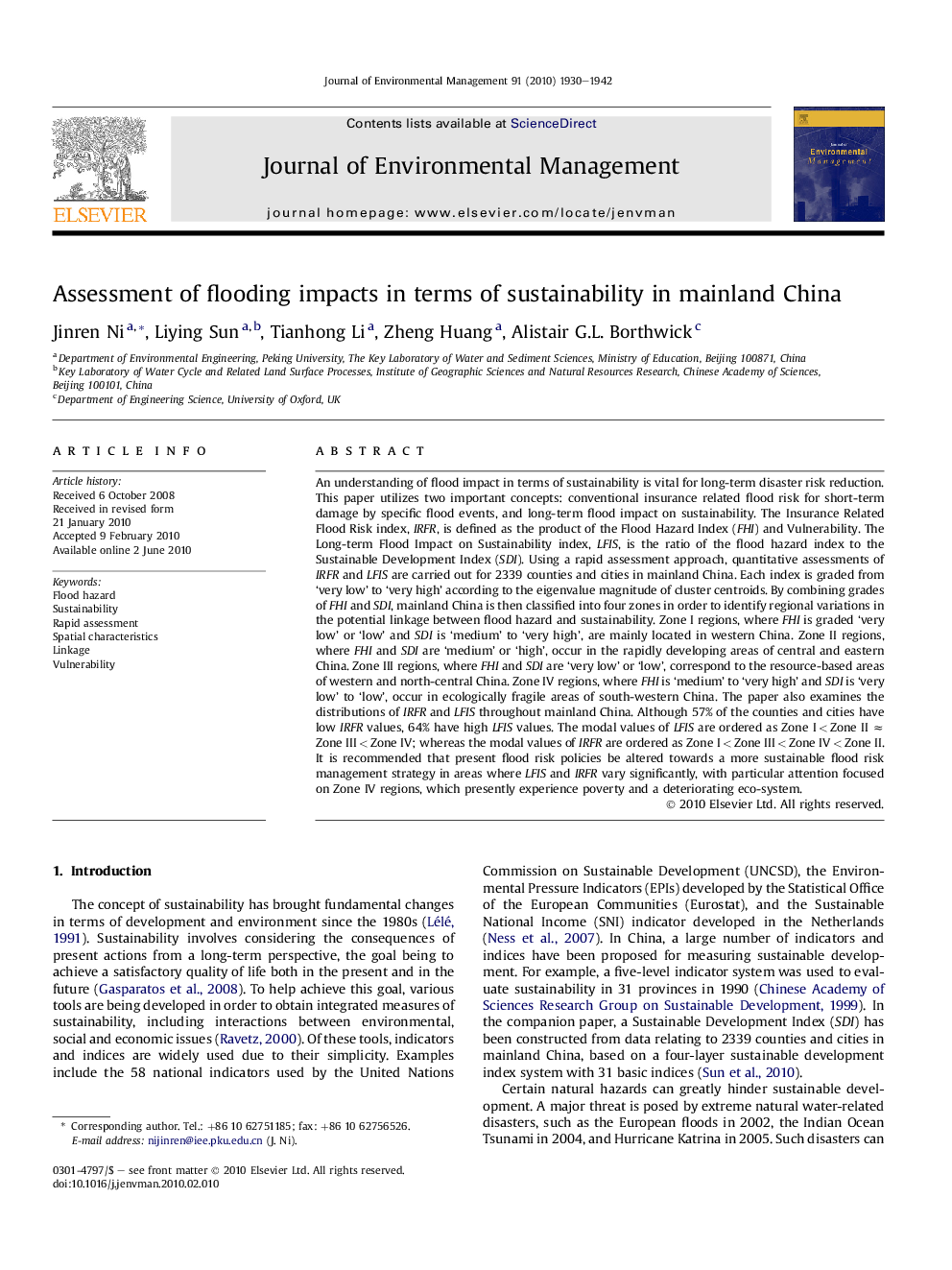| کد مقاله | کد نشریه | سال انتشار | مقاله انگلیسی | نسخه تمام متن |
|---|---|---|---|---|
| 1057337 | 947071 | 2010 | 13 صفحه PDF | دانلود رایگان |

An understanding of flood impact in terms of sustainability is vital for long-term disaster risk reduction. This paper utilizes two important concepts: conventional insurance related flood risk for short-term damage by specific flood events, and long-term flood impact on sustainability. The Insurance Related Flood Risk index, IRFR, is defined as the product of the Flood Hazard Index (FHI) and Vulnerability. The Long-term Flood Impact on Sustainability index, LFIS, is the ratio of the flood hazard index to the Sustainable Development Index (SDI). Using a rapid assessment approach, quantitative assessments of IRFR and LFIS are carried out for 2339 counties and cities in mainland China. Each index is graded from ‘very low’ to ‘very high’ according to the eigenvalue magnitude of cluster centroids. By combining grades of FHI and SDI, mainland China is then classified into four zones in order to identify regional variations in the potential linkage between flood hazard and sustainability. Zone I regions, where FHI is graded ‘very low’ or ‘low’ and SDI is ‘medium’ to ‘very high’, are mainly located in western China. Zone II regions, where FHI and SDI are ‘medium’ or ‘high’, occur in the rapidly developing areas of central and eastern China. Zone III regions, where FHI and SDI are ‘very low’ or ‘low’, correspond to the resource-based areas of western and north-central China. Zone IV regions, where FHI is ‘medium’ to ‘very high’ and SDI is ‘very low’ to ‘low’, occur in ecologically fragile areas of south-western China. The paper also examines the distributions of IRFR and LFIS throughout mainland China. Although 57% of the counties and cities have low IRFR values, 64% have high LFIS values. The modal values of LFIS are ordered as Zone I < Zone II ≈ Zone III < Zone IV; whereas the modal values of IRFR are ordered as Zone I < Zone III < Zone IV < Zone II. It is recommended that present flood risk policies be altered towards a more sustainable flood risk management strategy in areas where LFIS and IRFR vary significantly, with particular attention focused on Zone IV regions, which presently experience poverty and a deteriorating eco-system.
Journal: Journal of Environmental Management - Volume 91, Issue 10, October 2010, Pages 1930–1942